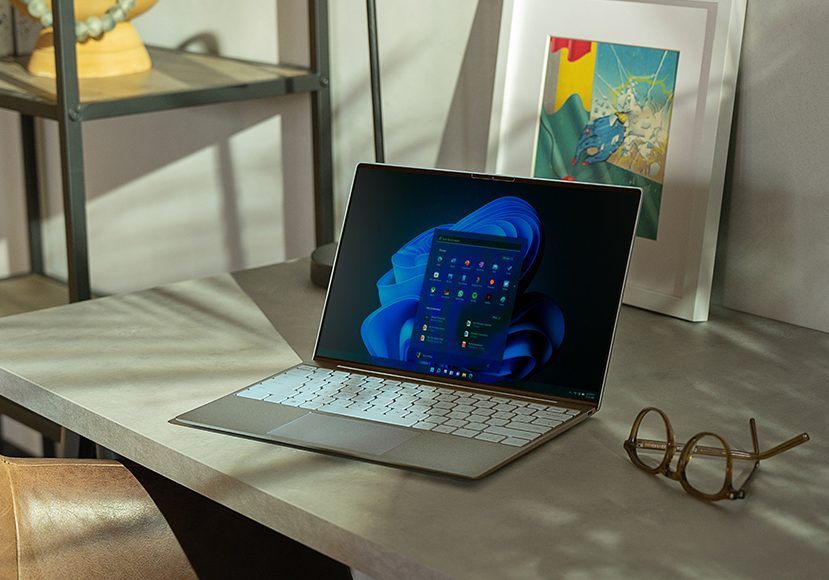
Best Intel Core i7 Windows Laptops in 2023 (All Budgets)
In this guide, you'll discover the best Intel Core i7 Windows laptops for gaming, video and photo editing, and everyday tasks. Find the right one for you.
In this guide, you’ll discover the best Intel Core i7 laptops for gaming, video and photo editing, and everyday tasks.
After over 50 hours of research, our resident computer experts have come up with recommendations for all budgets.
Whether you need a compact laptop with good battery life for travel, a touch screen, superb gaming performance, or simply something affordable, you’ll find the best i7 laptop for your needs right here.
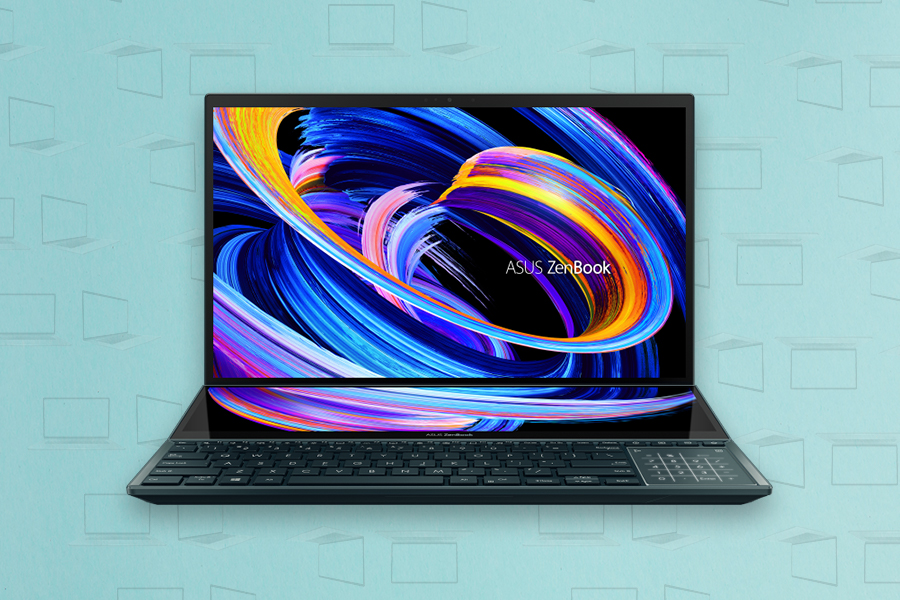
Unique dual 4K touchscreen monitor design provides additional real estate while the Intel Core i7- 9750H processors can handle any task with ease.
Windows runs great on Intel Core processors, delivering excellent performance and user experience. Although many creatives use MacOS, the vast majority of laptop users still use the Windows operating system.
Don’t worry about being confused with technical jargon – we’ll explain everything you need to know about the Intel Core i7 processor, and why it’s still a great option despite the presence of the latest i9 generation.
Even if you’re a complete newcomer to Windows and Intel Core laptops, by the end of this guide, you’ll feel confident enough to make your decision.
So let’s get stuck into the recommendations.
What is the Best Intel Core i7 Laptop in 2022?
| Image | Product | Features | |
|---|---|---|---|
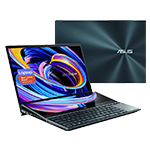 | ZenBook Pro Duo 15 Laptop BEST 16GB RAM |
| View Price → |
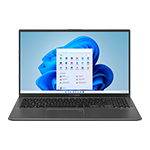 | ASUS VivoBook LaptopBEST 8GB RAM |
| View Price → |
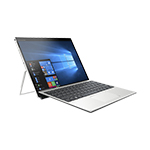 | HP Elite X2 Laptop BEST PORTABLE |
| View Price → |
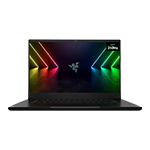 | Razer Blade 15 Gaming LaptopBEST GAMING |
| View Price → |
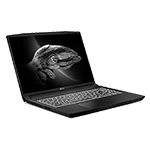 | MSI Creator M16 LaptopBEST PHOTO & VIDEO EDITING |
| View Price → |
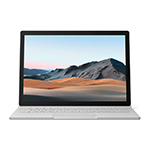 | Microsoft Surface Book 3 LaptopMOST COMPACT |
| View Price → |
ZenBook Pro Duo 15 Laptop | Best i7 Processor with 16GB RAM

- Additional dual-screen area
- Features touch screen function
- 1TB SSD storage
- Looks amazing
- Premium price tag
- No SD card slot
Kicking our list off with ASUS, the ZenBook Pro Duo is a great Intel Core i7 laptop that combines incredible power with a truly unique dual-screen feature. If you thought one 4k touch OLED display was a good thing, how about two of them?!
Equipped with a 10th generation Intel Core i7 CPU running at 5.0GHz, the processor can take on pretty much whatever you throw at it. It also houses the NVIDIA GeForce RTX 3070 GPU, so you know graphics aren’t something to worry about.
Additionally, this 8-core laptop features 16GB DDR4 RAM and PCIe NVMe SSD storage of 1TB capacity, providing you with instantaneous loading and massive space to hold all your precious data.
What’s more, the ZenBook Pro Duo includes ScreenPad Plus, which is a 14-inch touchscreen with 4K resolution to take your multitasking experience to a whole new level.
The main screen is 15.6 inches OLED, which is enough real estate for any of the major photos and video editors, and it’s also touch-supported with 4K resolution. As the cherry on top, the package comes with a stylus pen and a removable palm rest, making it a great laptop for Photoshop.
ASUS VivoBook Laptop | Best i7 Processor with 8GB RAM

- A great budget laptop
- Features HDD and SSD
- Sleek design
- Not the best graphics for gaming
Another awesome option from ASUS for folks on a budget but still wanting powerful laptops is the VivoBook Intel Core i7 laptop. This machine delivers an impressive processing capability thanks to its 10th generation Intel Core i7-1065G7 processor running at 3.9GHz maximum turbo.
It comes with Intel HD Graphics 6000 and a 15.6-inch screen with full HD resolution. This allows for a good viewing experience with vibrant color, but we don’t consider it to be the best laptop for gaming.
The 8GB of RAM means you’ll get fast performance, while the 256GB SSD plus 1TB HDD storage provides more than enough speed and capacity.
Finally, the design of this unit isn’t just attractive with a full-size keyboard, but it’s also quite slim for better portability. As far as budget laptops powered by the Intel Core i7 chip, this is a great option.
HP Elite X2 Laptop | Best Portable i7 Laptop

- Lightweight design
- Can be separated into a tablet
- A lot of RAM for impressive multitasking
- The default storage could be improved
HP has always been known for pumping out top-notch computers, and the Elite X2 is no exception. When it comes to portability, it’s one of the best Intel Core i7 laptops you can come across.
The Elite X2 is equipped with a full HD 12.3-inch screen, has dimensions of 12 x 1 x 9 inches, and weighs just over 2 pounds. As a neat party trick, you can also detach the screen part from the keyboard and use it as a tablet for extra freedom.
Performance-wise, the Elite X2 is equipped with an 8th generation Intel Core i7-8665U CPU and 16 GB of RAM – enough power to run processor-intensive video rendering tasks quite smoothly.
The storage on the Elite X2 is only 256GB SSD. This means you won’t struggle with loading times (Solid State Drives are much faster than Hard Disk Drives), but the only downside is that you may need to use an external drive to expand your storage capacity.
256GB is ok for a memory card, but it’s definitely not enough storage for a laptop if you plan to store lots of photos and videos. Fortunately, external hard drives are affordable.
Razer Blade 15 Gaming Laptop | Best i7 for Gaming
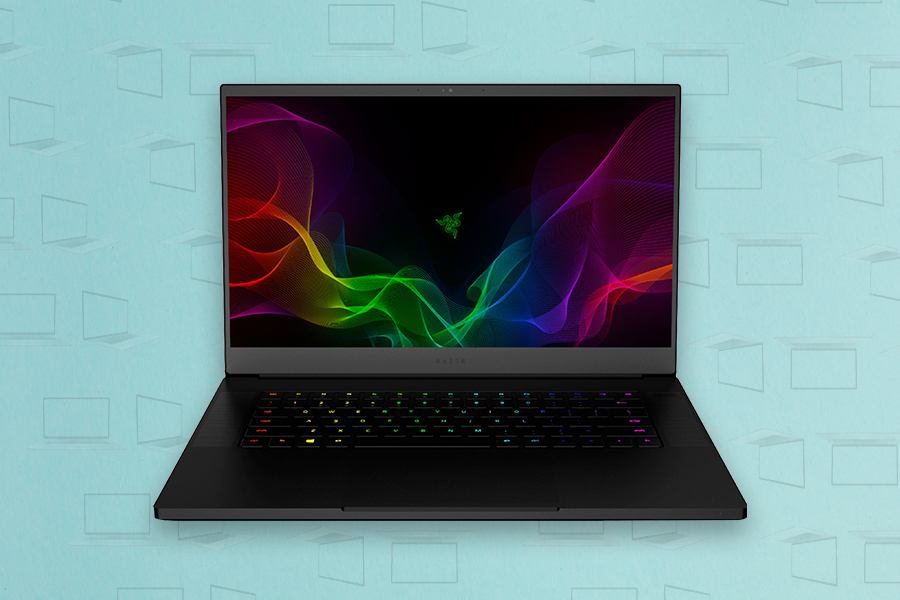
- Stunning visuals
- Great GPU for superb details
- Excellent cooling
- Very expensive
- The keyboard could be more spaced out
When we talk about Intel Core i7 gaming laptops, there’s no way Razer Blade 15 won’t take the cake.
This beast houses the 12th generation Core i7-12800H CPU with 14 cores running at a maximum of 4.8GHz turbo, so get ready for some awesome speed for the most demanding games.
This pure gaming laptop also houses the NVIDIA GeForce RTX 3070 Ti GPU, delivering 100 frames per second at 1440p resolution and catering to the stunning level of detail of the 4K 240Hz 15.6-inch display.
In addition to grade-A graphics and processing, the Razer Blade 15 features 1TB PCIe SSD and 16 GB DDR5 4800MHz RAM for a smoother and quicker loading experience.
Oh and let’s not forget the backlit keyboard and the built-in next-gen vapor chamber cooling system that uses extra exhaust fins, more liquid, and quieter fans.
As a side note, plenty of people get a gaming laptop and don’t actually use it for hardcore gaming, especially when they look as good as the Razer Blade. With these kinds of internals, it can handle whatever you decide to throw at it.
MSI Creator M16 Laptop | Best for Photo & Video Editing

- Brilliant processing capability
- Superior multitasking
- Reasonable price
- Unique design
- The battery life is nothing special
- No SD card reader
For content creators and editors looking to buy a laptop that can handle all their media creation and editing needs, we present you with the MSI Creator M16.
This powerhouse features the 12th gen Intel Core i7-12650H CPU and 32 GB DDR4 SDRAM to support exceptional multitasking and cruise through the most demanding applications and programs with ease.
Additionally, it’s equipped with the NVIDIA GeForce RTX 3060 GPU and has a 16-inch 2K, 60Hz DCI-P3 screen to deliver fast response times, vibrant colors, and gorgeous details. The 1TB SSD takes care of the storage space and reduces loading time.
What’s more, you don’t need to worry about overheating with the M16 thanks to the integrated Cooler Boost 5 Technology, making this computer great for graphic design work and any other task that taxes the processor.
The only downside for content creators is the lack of an integrated SD card reader so you’ll need to use an external one, which are thankfully cheap as chips!
Microsoft Surface Book 3 Laptop | Most Compact i7 Laptop
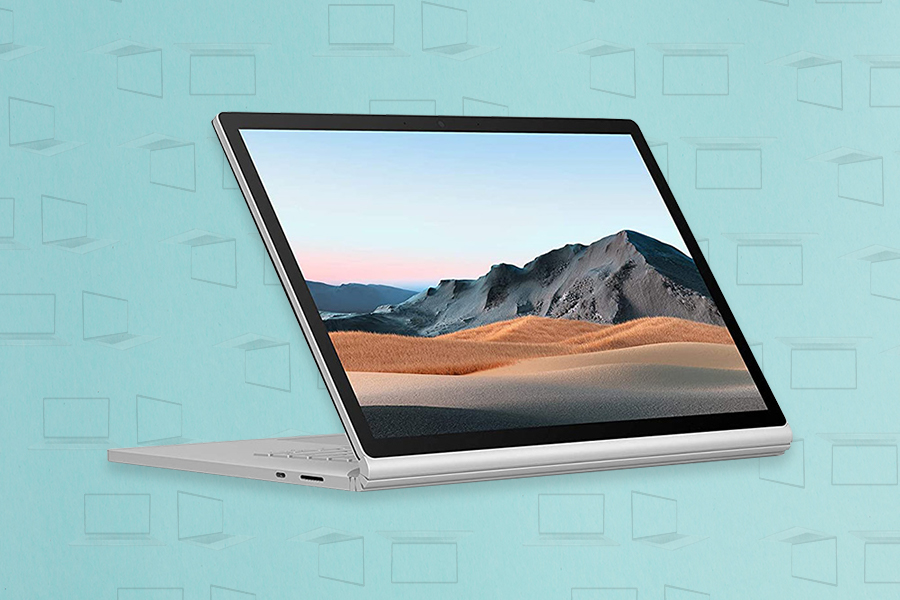
- Very fast processing performance
- Turns into a tablet
- Massive storage
- Great looking
- The graphics card could be better
Last but not least, we’re looking at the Surface Book 3 from Microsoft. It takes the spot of the most compact laptop thanks to its stunning 4K resolution 13.5-inch screen. It weighs 7 pounds and has dimensions of 12 x 0.9 x 9 inches.
The display of the Surface Book 3 is made 40 percent better than the Surface Book 2 thanks to the NVIDIA GeForce GTX 1650 Max-Q. Additionally, the 10th Gen Intel Core i7 processor and the 32 GB of RAM make it 50 percent faster.
Similar to the HP Elite 2, you can separate the screen section from the keyboard and use it as a powerful tablet for photo editing and additional freedom while running the entire Windows operating system.
The Surface Book 3 offers multiple SSD storage options up to 1TB. It comes with a battery life rated at a maximum of 15.5 hours – pretty impressive and more than enough to run the latest Windows operating system.
Intel Processors Explained: What are Core i3, i5, i7, i9, and Pentium?
Core i3, Core i5, Core i7, Core i9, and Pentium are all names of processors (also known as CPUs) that are made by Intel. Each of these CPUs offers a certain degree of processing capability to suit different sorts of tasks.
Let’s start with Core i3 CPUs. These processors barely scratch the surface of true multitasking capabilities, but they perform well enough for light to average users. They’re not up for tackling demanding tasks such as photo and video editing, but they make up for it with longer battery life.
An upgrade from Core i3 processors is Core i5 processors. These CPUs are a sweet spot for most users because they allow for a decent level of multitasking that’s comparable to Core i7 CPUs without costing as much.
Additionally, Core i5 processors can offer a satisfying gaming experience and even let you get into the more challenging work of photo and video editing.
As for Core i7 processors, they’re definitely a level higher than Core i5 CPUs. Their main advantage is better multitasking, especially when it comes to more complex programs you tend to use on modern laptop computers.
However, Core i7 laptops usually have a significantly higher price tag than Core i5 models. Users who are very concerned about speed can invest in a Core i7 and it’ll keep them more than happy.
If you want to take processing speed and power even further, a Core i9 CPU has got you covered. But unless you want a unit to handle extremely demanding tasks such as media editing and creation, Core i9 processors can be a hefty cost that you don’t need.
Truth be told, most people who buy Core i9 laptops end up wasting the massive potential of their devices. It’s pretty sad if you ask us!
Finally, let’s take a look at Pentium processors. You’d think these CPUs are a step up from Core i9 judging by our explanation sequence, but they’re far from that assumption. Pentium CPUs are a downgrade from Core i3, which means you’ll find them in the cheapest laptop models.
Pentium processors first came out back in the 1990s, and at the time, they were one of the more powerful units. Nowadays, however, they’re too slow for advanced multitasking, gaming, and highly challenging functions. This also goes for newer versions of Pentium CPUs.
We’re not denying that Pentium processors are budget-friendly — we’re actually glad they exist to provide users with affordable laptops. These CPUs even feature very long battery lives as they’re remarkably energy-efficient.
Unfortunately, this efficiency comes from the fact that they can’t do much other than basic office tasks, running the Windows operating system smoothly and web browsing.
What You Need to Know About The Intel Core i7 Processor
The Intel Core i7 processor is meant to provide users with improved multitasking and better performance in high-end gaming, media editing, media creation, and other challenging workloads compared to its general predecessor; the Core i5.
The Intel Core i7 CPU first made an appearance in laptops back in 2009 and 2010 with 1st gen versions such as the Core i7-720QM and Core i7-620M.
Today, Core i7 12th generation models such as the Core i7-12650HX and Core i7-12700H are the most current i7s.
Is getting i7 in a laptop in 2022 still worth it?
Yes, we’d say buying an i7 laptop is worth the money because it’s an investment for several years to come.
Core i7 processors allow you to access very demanding programs and games. They can handle intense multitasking seamlessly -whether it’s work, play, or both- without notably slowing down.
Granted, Core i7 CPUs can be too powerful for average users, but you need to consider that they’ll keep your laptop’s functionality and productivity at an “up to date” level in the future.
But can’t I just save money and buy the i5 processor?
You may be wondering “is the i7 noticeably faster than i5?”, and that’s a justifiable question given the price difference and the money you could save if you just opt for a Core i5 laptop.
While both processors may have similar base speeds, turbo speeds, and integrated graphics, the i7 is still much more powerful as it uses more cores. This means you’ll be able to tackle media creation, media editing, high-end gaming, multitasking, and all sorts of demanding work a lot faster and smoother.
Additionally, an i7 CPU typically features a more reliable cooling system to prevent the system from heating, which leads to better performance when doing heavy tasks.
If I have a bigger budget, what is the fastest processor for a laptop?
Well, in this case, the fastest processor you get your hand on in a laptop is Intel’s 12th generation Core i9. For example, the Core i9-12900HX.
This CPU offers a lightning-fast processing speed that can handle the needs of high-end users looking for the absolute utmost performance from a laptop. Its processing power is equal to and even surpasses some of the finest desktop CPUs on the market.
In fact, it’s bested only by Intel’s Core i9-12900K, which is an absolute beast for desktop computers. However, both versions share the same number of cores.
What makes a laptop fast? Let’s talk about the importance of RAM
It’s safe to say that two of the most crucial specifications when comparing laptops are the processor and RAM.
The processor is your laptop’s brain. The bigger it is -meaning the more cores it has- the more powerful it’ll be and the faster it’ll perform.
On the other hand, RAM is your processor’s way of “talking” to other components in the laptop. So more RAM means faster relaying of information between the processor and components, wider support for software types, and better performance.
To answer the question “what makes a laptop faster, RAM or processor?”, we’d say that both components are necessary for a fast laptop. However, the processor comes first since it’s the brain and RAM follows close after.
A fast processor makes a laptop snappy when connected to more RAM. With the same amount of RAM, a slower processor would still make for a slow laptop.
A fast processor with less RAM wouldn’t necessarily perform slow, but you’d be underusing its potential.
So, if you ask us “which is more important, processor or RAM?”, we’d put it like this: if you have to choose between spending more money on one of them, we recommend investing more of your budget in the processor.
What about Intel, AMD, Nvidia, and Ryzen? What variant processor is best for a laptop?
You already know that Intel makes Celeron, Atom, Pentium, and Core i3 to i9 processors. Intel directly competes with AMD, which produces processors known as E (1, 2), A (4, 6, 9, 12), and Ryzen (3, 5, 7, 9).
Nvidia, on the other hand, specializes in GPUs (graphic processing units), which are different components that are responsible for rendering graphics for playing games, videos, and so on.
As such, the real comparison here is between Intel and AMD.
When it comes to performance, it’d take a whole other article to compare the two processors. Even so, the debate is still raging on among users of both manufacturers and it doesn’t seem like it’ll even end!
That said, you may be familiar with the biggest difference between Intel and AMD processors — the price. Generally, Intel’s high-end CPUs are more expensive because they’re consistently the better-performing processors across various benchmarks.
If you’re wondering “how do I know which processor is better?” The answer is simpler than you think.
Instead of getting confused by all the terminology that gets thrown around when assessing CPUs such as “clock speed”, “threads”, “power ratings”, and so on, you should focus on what you’ll be mostly using the laptop for.
Low-intensity tasks such as chatting, browsing, watching, and streaming don’t need a very capable processor. Options such as Intel Celeron, Pentium or Core i3, and AMD A4, A6, A8, A10, or Ryzen 3 should be enough.
Average-intensity tasks such as studying, office work, programming, and light gaming need a fairly capable processor. Options such as Intel Core i3 (latest generations), Core i5, or Core i7 (earlier generations), and AMD Ryzen 3 or Ryzen 5 should be suitable.
High-intensity tasks such as high-end gaming, video editing, media creation, and designing require a very capable processor. Options such as Intel Core i7 or Core i9, and AMD Ryzen 7 or Ryzen 9 should do the trick.
OK, so what other things do I need to know when buying a laptop?
Buying a laptop comes with a wide range of intended uses depending on your interests and lifestyle.
It could be that you’re mainly looking to satisfy your gaming needs or want a machine to help with your work. You may also be in the market for a laptop that caters to everyday tasks and personal activities such as browsing social media, watching movies, and so on.
Each of these cases can call for a different set of specs or demand that you focus on certain features more than others.
Since we already discussed processors, let’s take a look at other important aspects you need to take into account before choosing an Intel Core i7 Windows laptop.
- Screen Size and Portability
The size of a laptop’s screen goes hand in hand with its level of portability. As we all know, the main reason many people choose to buy laptops instead of full-blown desktops is to get a computing experience anywhere they want.
So when you’re choosing a screen size for your laptop, you should think about how much you’re planning to move with your laptop and how easy you want carrying it to be. A laptop’s portability is directly proportional to its screen size, so you’ll have to decide which end will take more sacrifice.
Generally speaking, the bigger the screen on a laptop, the heavier and bulkier it’s going to be. This makes sense because more display means more components to run it properly and also more room for other elements to make the laptop extra capable.
That said, if you’re planning on keeping your laptop at home or the office most of the time, then you don’t really need to worry about its portability. Larger screen sizes of 17 or 18 inches won’t give you much trouble and will offer you a great viewing experience.
However, it may require charging more frequently than smaller laptops to support the bigger display, so just keep this in mind.
If you’re after something compact, then you should stick to a laptop with a screen size ranging between 11 and 14 inches. Besides offering the highest level of portability for folks who are always on the move, these units tend to last the longest unplugged. But they’re also the least overall capable models since they don’t have a lot of room to deal with the heat.
Right down the middle of the size spectrum, you can go for a laptop with a 15-inch screen. This is the sweet spot of laptop screen sizes as it combines decent portability with a reasonable display. It’s fairly easy to carry around and usually lasts longer unplugged than bigger models – no wonder it’s also the most common laptop size.
- Display Resolution
Speaking of the screen, you should also consider the resolution of the laptop’s display. The rule of thumb is that a higher resolution means a better picture to look at.
Your laptop can have the most powerful graphics card and the sleekest frame rates, but they won’t do much without a display resolution that backs them up and allows you to experience all the details and colors.
The minimum acceptable resolution in a laptop nowadays is 1920 × 1080. Going higher to 4K or 8K is always welcomed, but going any less is a serious crime.
- Storage
Everyone nowadays knows how critical storage space on an electronic device can be, even more so when it’s your laptop where you’ll be keeping the bulk of your data. As such, the more gigabytes your storage offers, the more you won’t need to worry about keeping track of what you save on your laptop.
Another storage-related factor you should consider is speed; how quickly does your laptop retrieve data?
SSDs (solid state drive) are significantly faster than HDDs (hard disk drive), which means less loading time across games and multiple programs. But the latter typically offers more storage, so the ideal approach is to have both types of drives in your laptop.
- Audio
The importance of sound quality in a laptop depends on what you mainly minted to use it for.
For example, if you’re a gamer, sound can be the difference between winning or losing a game. Similarly, music producers need great audio clarity to do their work.
On the other hand, regular users don’t need to worry about spatial or high-end sound support. Standard speakers with “nothing special” will keep them happy.
- Keyboard
Many people forget to check the keyboard built into the laptop before buying it because they’re overwhelmed by thinking about other features. You want a keyboard that feels comfortable when typing and doesn’t strain your hands.
To achieve this, you need key travel of no less than 1.5 to 2 millimeters and key actuation of about 60 to 70 grams. These values correspond to springy keys that aren’t too stiff or too soft.
You should also check that your laptop supports anti-ghosting and maybe go for something with backlighting as well to enjoy those super cool colored light patterns across your keys.
- Battery Life
Last but not least, you can’t overlook battery life when you’re dealing with a responsive, high-performing processor such as the Core i7 that can quickly eat through the watts. That said, you should also factor in your average level of use.
In general, you don’t want a battery less than 45 to 50Wh. This should keep your laptop running for around 4 to 5 hours.
Best i7 Laptop: Final Recommendations
The best i7 windows laptop? We believe that the ASUS ZenBook Pro Duo 15 Laptop is the all-around winner.
It offers excellent performance when it comes to processing thanks to the 10th generation Intel Core i7 CPU and the 16GB DDR4 RAM. It also supports great graphics and offers plenty of storage room with a unique double touch screen design offering expanded screen real-estate.
No matter the tasks you’re looking to tackle with your i7 windows laptop, we’re confident you’ll find something that fits you after you go through our guide and options.

Unique dual 4K touchscreen monitor design provides additional real estate while the Intel Core i7- 9750H processors can handle any task with ease.














